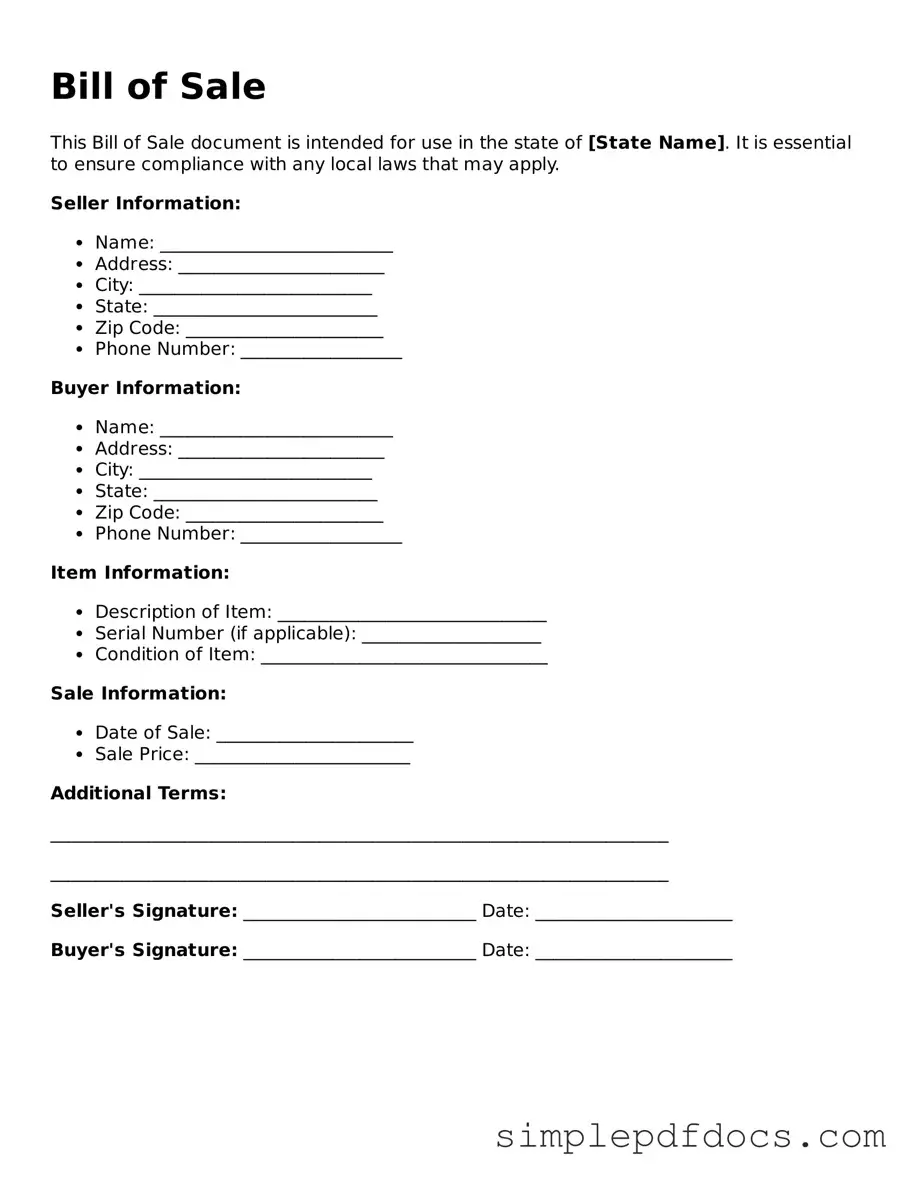Attorney-Approved Bill of Sale Form
A Bill of Sale is a legal document that serves as proof of the transfer of ownership of personal property from one party to another. This form outlines essential details such as the description of the item, the sale price, and the identities of both the buyer and seller. Understanding the significance of a Bill of Sale can help individuals protect their rights and ensure a smooth transaction.
Get Document Here
